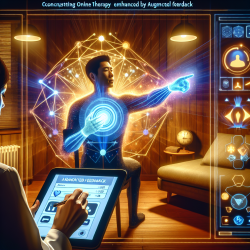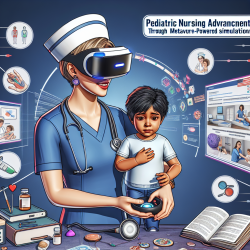As a practitioner providing online therapy services, continuously improving your skills and techniques is crucial. Recent research titled "Augmented feedback influences upper limb reaching movement times but does not explain violations of Fitts' Law" offers valuable insights that can be directly applied to your practice. This study, conducted by de Grosbois, Heath, and Tremblay, delves into the intricacies of movement time (MT) and how augmented feedback can influence it. Here's how you can leverage these findings to enhance your therapy sessions.
Understanding the Research
Fitts' Law is a well-known principle in motor control that describes the speed-accuracy trade-off in goal-directed movements. The law asserts that the time required to move to a target area is a function of the distance to the target and the size of the target. However, recent research indicates that augmented feedback can influence movement times, especially in tasks involving upper limb reaching.The study explored how augmented terminal feedback (feedback provided at the end of a movement) affects movement times and whether it can explain the observed violations of Fitts' Law. The findings revealed that while augmented feedback does shorten movement times, it does not fully account for the violations of Fitts' Law, suggesting that other factors, such as individual strategies and effective target width, play a significant role.
Applying the Findings in Online Therapy
As an online therapist, you can implement these findings in several ways to improve your clients' outcomes:
- Incorporate Augmented Feedback: Use visual or auditory feedback during therapy sessions to provide immediate information about movement accuracy. This can help clients adjust their movements more effectively and improve their performance over time.
- Focus on Individual Strategies: Recognize that each client may have a unique approach to balancing speed and accuracy. Tailor your feedback and instructions to align with their individual strategies, whether they prioritize speed or accuracy.
- Utilize Effective Target Width: Consider using effective target width (the actual area utilized by the client) rather than nominal target width when assessing performance. This can provide a more accurate measure of their abilities and progress.
Encouraging Further Research
While the study provides valuable insights, it also highlights the need for further research to fully understand the complexities of Fitts' Law and the role of augmented feedback. As a practitioner, staying updated with the latest research and incorporating new findings into your practice is essential. Encourage your colleagues to engage in continuous learning and research to enhance the collective knowledge and effectiveness of online therapy services.
Conclusion
By integrating the outcomes of this research into your practice, you can provide more effective and personalized therapy sessions. The use of augmented feedback, consideration of individual strategies, and effective target width can significantly enhance your clients' progress and overall experience.To read the original research paper, please follow this link:
Augmented feedback influences upper limb reaching movement times but does not explain violations of Fitts' Law.










